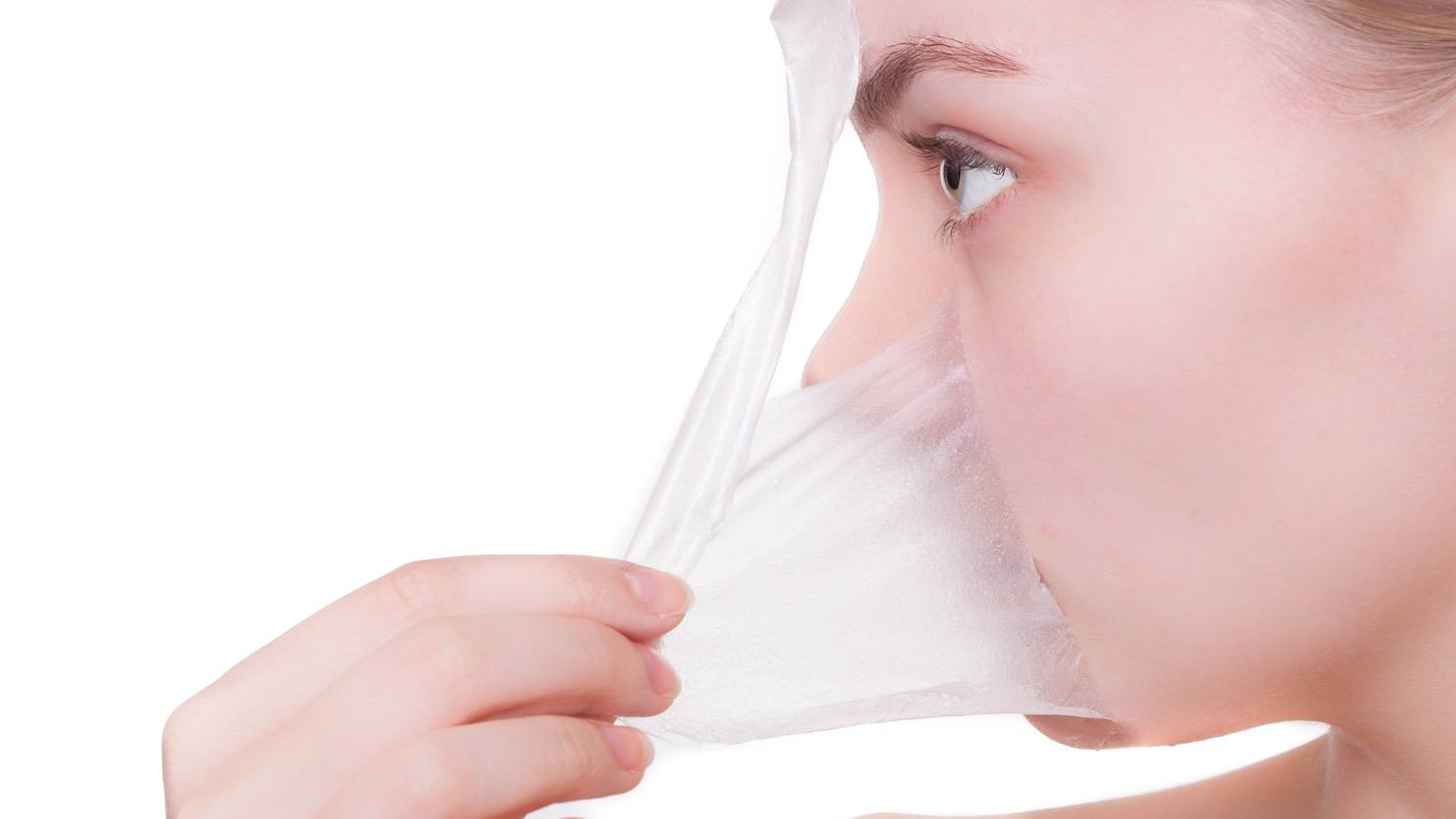Are you frightened by the thought of a chemical peel, because it sounds dangerous and painful? Fear no more. A chemical peel is simply the application of a chemical solution to remove the outer layers of skin in order to improve texture and reveal smoother, clearer, more radiant skin. Thanks to recent advancements in this field, you can look forward to treatments that are less time-consuming, less painful, and just as effective as old-school peels.
Chemical peels are truly “old school,” centuries old in fact. Beauty-conscious women of ancient Egypt used sour milk and grape juice to reduce sun damage and the effects of ageing. The chemical peel process has come a long way since then.
Today, one of the most common chemical peels involves TCA (trichloroacetic acid), which is widely used by dermatologists. It can brighten up ageing faces and remove damaged skin cells. Concern about TCA has been growing since the 1990s, however, when some studies began linking it to cancers in animals.
That’s why we’re excited to share news about a new treatment that is kinder and gentler to your skin and to your body. The hero of our story: the glycolic chemical peel.
3 Types of Chemical Peels
Chemical peels differ depending on how deeply the chemical penetrates and what type of chemical solution is used. Things that may affect the depth of a peel include:
- The acid concentration in the peeling agent
- The number of coats that are applied
- The amount of time allowed before the acid is neutralised
Depending on which type of chemical peel you choose, your recovery time could be as little as a few hours or up to two weeks of at-home rest.
- Deep Chemical Peels with Phenol – Deep peels are not recommended for darker skin types, as they can cause bleaching of the skin (hypopigmentation). Even in lighter-skinned people, phenol peels may bleach the skin. Additionally, in most cases a deep peel is a once-only event.
- Medium Chemical Peels with TCA – This treatment is ideal for patients with fine lines and wrinkles, blemishes or uneven pigmentation. Medium peels penetrate the skin more deeply than superficial peels by causing a controlled second-degree burn of the skin.
- Superficial Chemical Peels with Glycolic Acid are the mildest of chemical peels and are appropriate for all skin types. Glycolic acid is typically used to improve rough, dry skin or uneven pigmentation. These light chemical peels can alsoimprove mild acne and sun damaged skin. Multiple treatments may be needed.
Why You’ll Love Glycolic Chemical Peels
Glycolic is formulated from sugar cane, and a glycolic peel creates a mild exfoliating action while also stimulating collagen growth. Beyond that, glycolic peels can help
- Reduce the appearance of wrinkles and fine lines
- Unclog pores
- Eliminate blackheads
- Reduce pore size appearance
- Smooth skin texture
- Increase skin firmness
- Repair sun damage
- Fade freckles
Before you fall head over heels in love with the idea of recapturing your youth with a chemical peel, you should be aware that the results are not permanent. Though chemical peels may reduce visible wrinkles and fine lines, they should not be thought of as an alternative toinjectables or laser facial rejuvenation.
What Happens During a Glycolic Chemical Peel?
First the skin to be treated is cleaned. Then glycolic acid is applied with a small brush, gauze, or cotton-tipped applicators and left on the skin for 10-15 minutes.
You may feel a modest burning sensation while the chemical is on your skin, but nothing like what you would experience with TCA or phenol. Interestingly, a handheld fan can help cool the skin and relieve any discomfort.
When time is up, water or alcohol is used to neutralise the acid and end the chemical reaction. The glycolic acid is then wiped off, and you’re good to go.
The treatment is done in-clinic, with no anaesthesia required.
Making the Most of Your Glycolic Chemical Peel
Cleansing the skin frequently with water or a special doctor-recommended wash is an important step in achieving optimal results from a glycolic peel. Other steps you can take include:
- Moisturising your skin daily
- Avoiding any sun exposureuntil peeling has stopped and sunscreen can be used. After that, sunscreen should be used every day, as new skin is more susceptible to sun damage than old.
- Some doctors also recommend using tretinoin cream nightly, usually starting 2 to 3 weeks after the peel.
The Right Peel for YOU
Chemical peel treatments can and should be customised for each person. Your doctor can help you decide, based on your skin type, what depth of peel and what type of chemical solution is most appropriate, which areas you want peeled, what kind of results you want, and how much risk you are willing to take. “If you want a glow for a few days, a glycolic peel is likely your best bet,” says Oprah Winfrey on her website.
And even if you are considering using an over-the-counter product at home, you should still consult with your dermatologist or doctor before going ahead.
